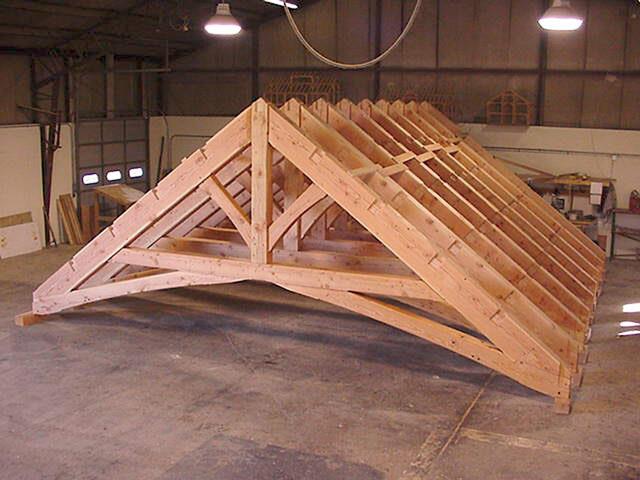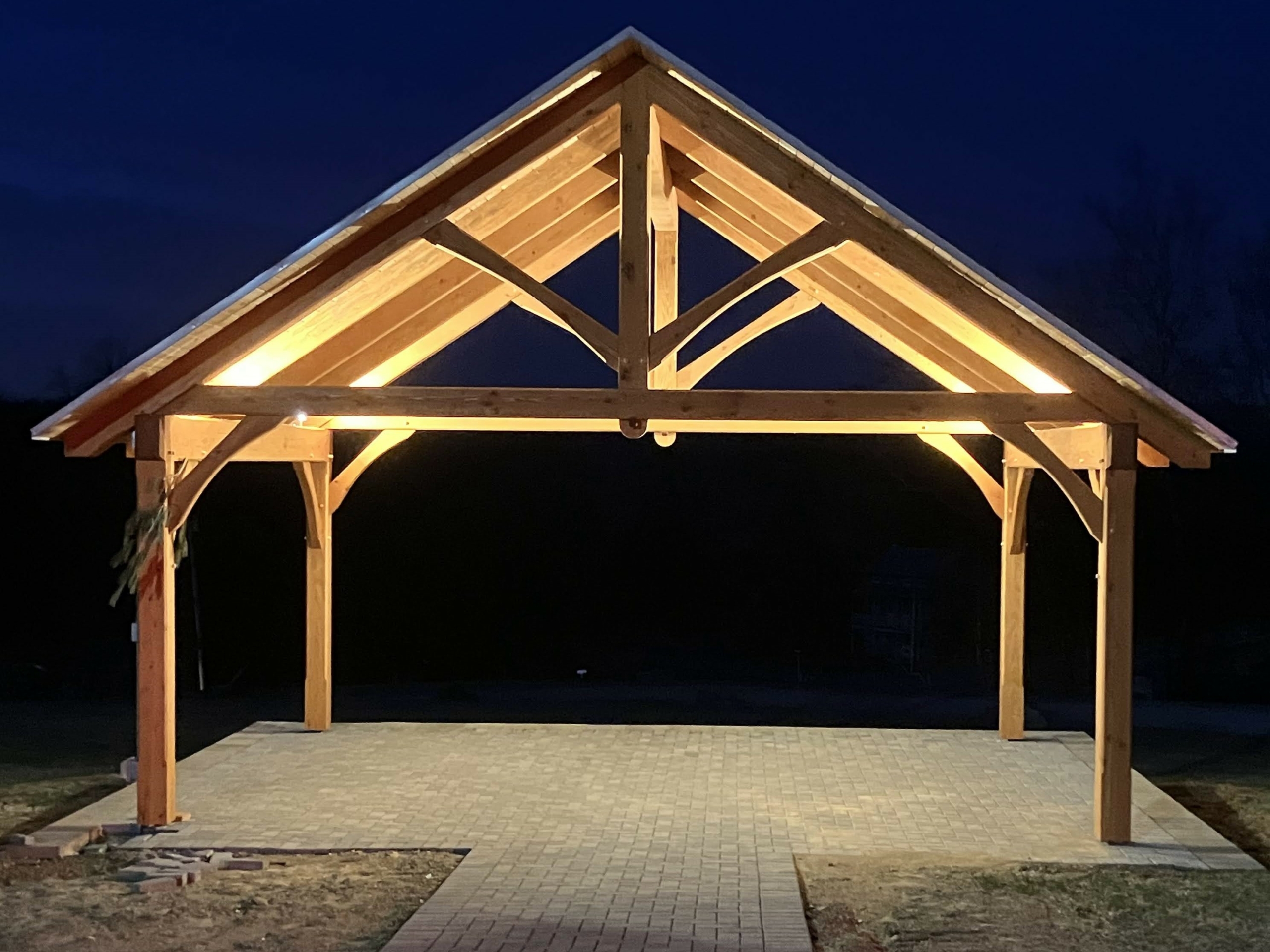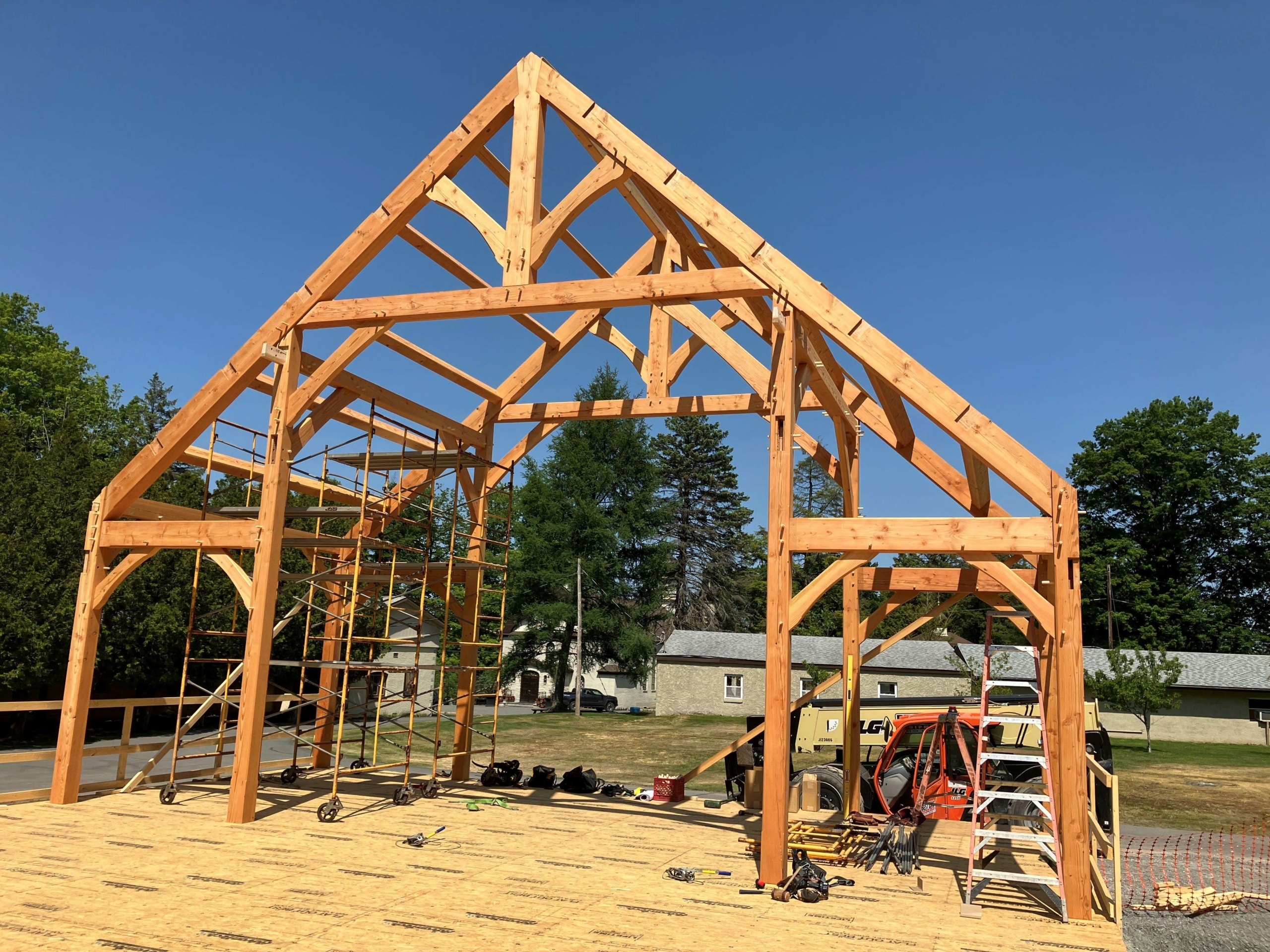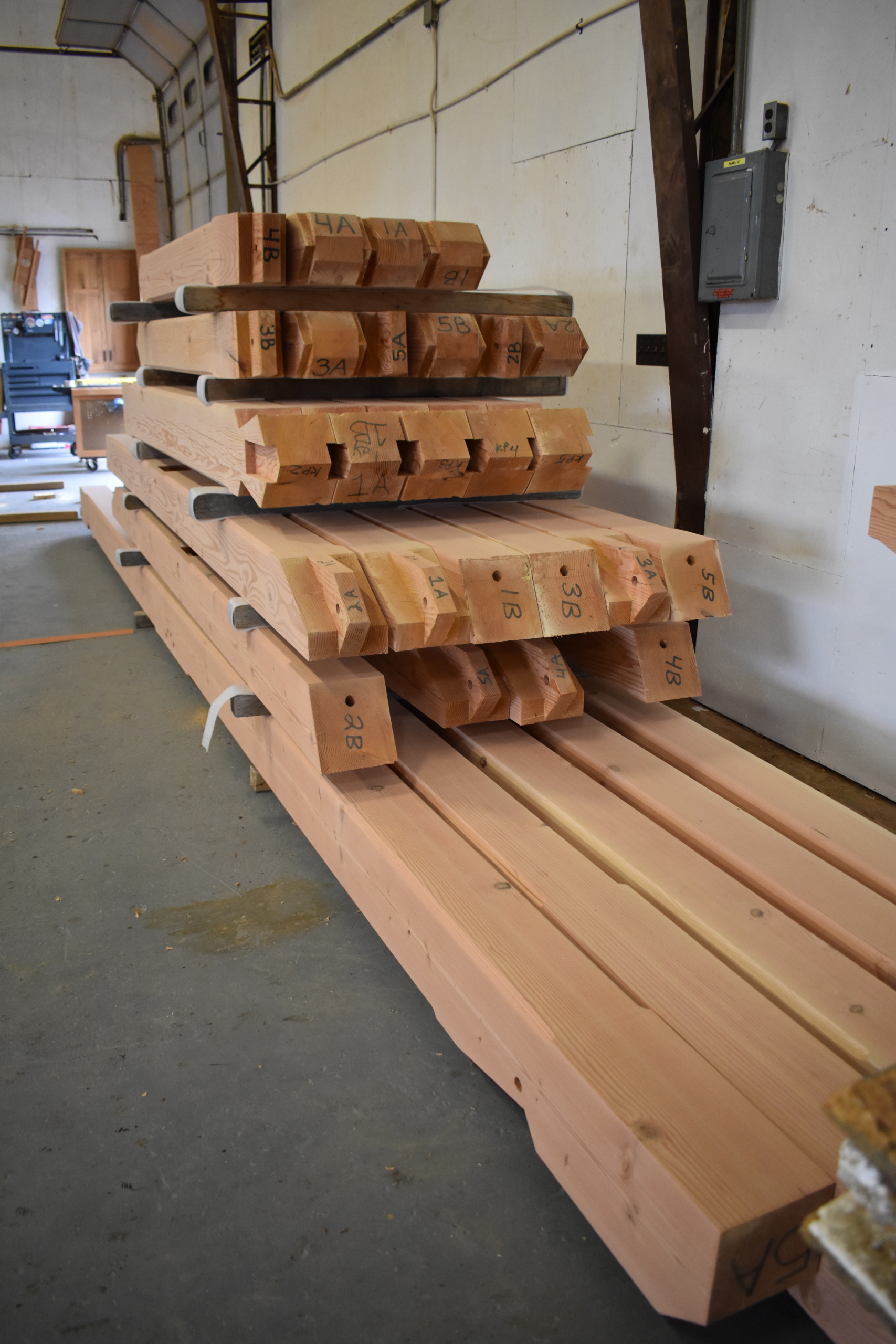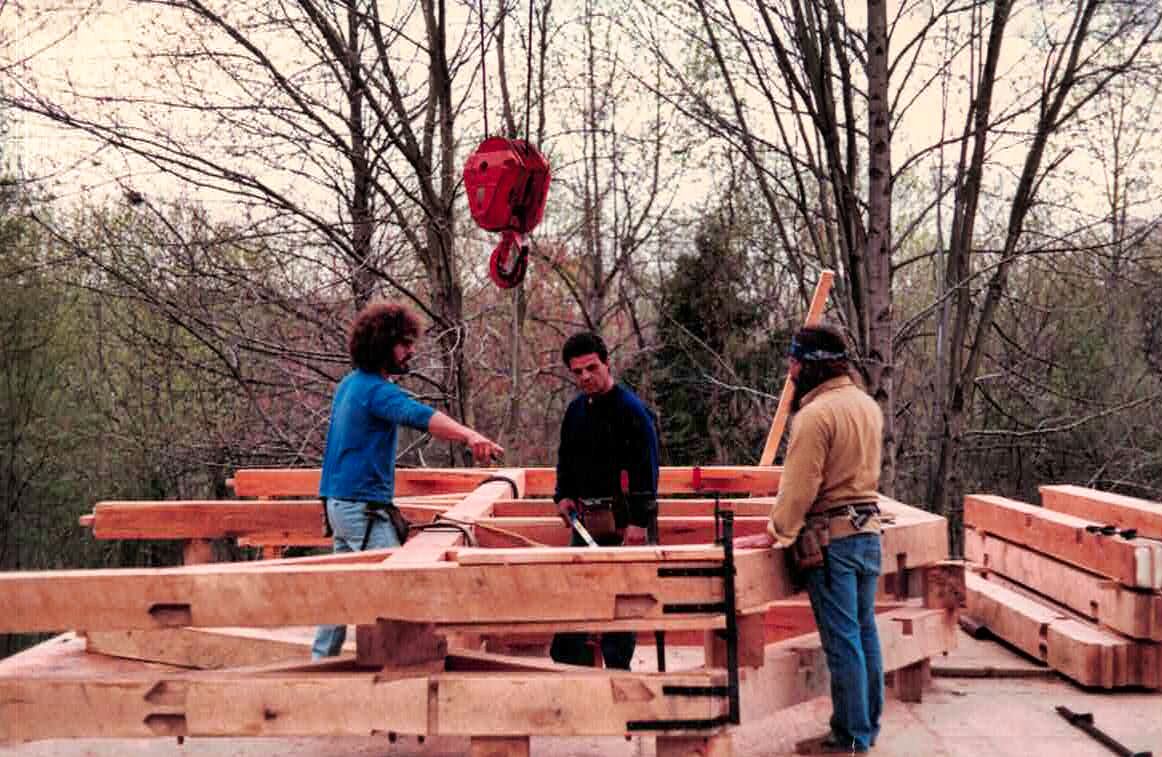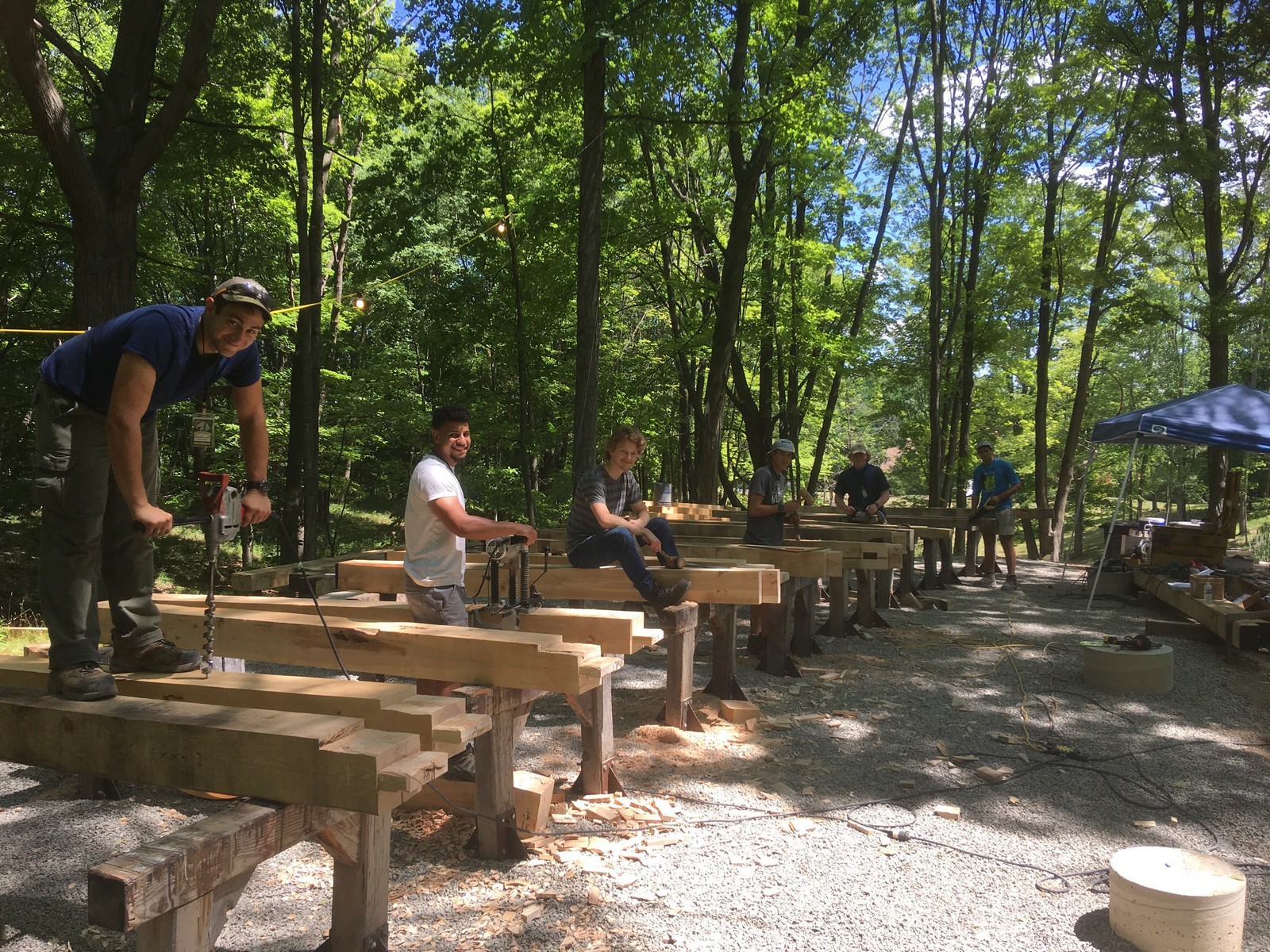Shops
Most of the shops back then were small by today’s standards. Many of them were in barns, some merely in driveways, others in ramshackle structures. After three years of working in a driveway my partner and I built, with mostly recycled material, a 32’x38’ shop. It was like heaven to us. For the first year or so the dump truck which delivered our raw timbers simply dumped them outside of the shop and we’d then carry each timber into the shop as we needed it. Back then most of the timbers we ordered were 16’ feet or less in length; but, they were Oak and therefore heavy. After a year or so of that we installed an overhead crane which ran out far enough to strap up each timber in order to fly them into the shop. The shop itself was neither heated nor insulated but neither sleet, nor rain nor snow any longer dictated whether we could work that day or not. Seven years later the size and complexity of the projects had necessitated a move to a larger space and since I was in the last year of my 40’s I needed warmth during the winter months. We rented this insulated and heated shop which sits on five acres for about six years and purchased it almost nine years ago. In about a year it is ours free and clear- well, except for that property tax thing.
Materials – The Timbers
We used Oak almost exclusively because it was plentiful here in Pennsylvania. I believe that most other timber frames heavily used indigenous species also. Now most timber framers offer a range of species. Twenty years ago it was difficult to get the higher grades of Douglas Fir. Due to increased demand it has been relatively easy to get the highest grades of this popular species for more than a decade. In the early years it was a given that timber orders would arrive from the sawyer in the rough cut state. If a smooth surface was desired on the frame a company had two choices: 1.)They could have the raw load delivered to a mill that had a four sided planer to be S4S’d (surfaced all 4 sides) before laying-out and carving, or 2) They could lay out and carve on the rough cut timber and then sand or plane with a hand held power tool. Luckily, for those of us how wanted smooth surfaces, Mafell, early on, came out with a hand held 11 ¼” power planer and a number of sawmills acquired four side planers. The value in a four sided planer is that it produces 90º timbers even if the timber fed in has angles less or more than that. I should mention that many sawmills already had two sided planers but if a timber with a non 90º parallelogram cross-section is run through such a planer the same deficiency will stay with the timber.
It is no surprise that the prices for timber have climbed in the last quarter century. I can remember oak prices of 65 cents a board foot for #2 & better, now it’s around $1.70. Significant, but not radical. What has been radical is the massive price jump for recycled aka antique, vintage or reclaimed timbers. South eastern Pennsylvania is saturated with old barns-some dating back to before the Revolution (the one against England) so perhaps my experience is slightly skewed. In the 1960’s as farm land was subdivided for development or converted into golf courses, many barns were leveled while others were left to deteriorate. Some of those that were leveled were simply torched. Others were scavenged by the Amish who were “green” before that term became a buzz word. By the 1970’s barn timber and siding was no longer being wasted–it was being sold. Beams were being used for mantels and accent floor joists while flooring and siding was being fashioned in to furniture. The cost per board foot in that decade was less than that of freshly cut timber. By the 1980’s things began to change–the flooring industry began buying up beams to saw and mill into floor boards which they hawked as “vintage flooring” and they soon discovered that customers were willing to pay a princely sum for floors that showed their age. Recycled timber prices began to climb. In 1987 I paid one dollar a board foot for the stuff- about 30% more than I was paying for fresh sawn oak. Just recently I priced an order for recycled timbers and, admittedly, there were some large members which push the average cost higher but I was still a bit startled to see that the cost exceeded $10 a board foot. Am I being petty blaming the flooring people for having driven recycled costs so high?
– Tony Zaya
